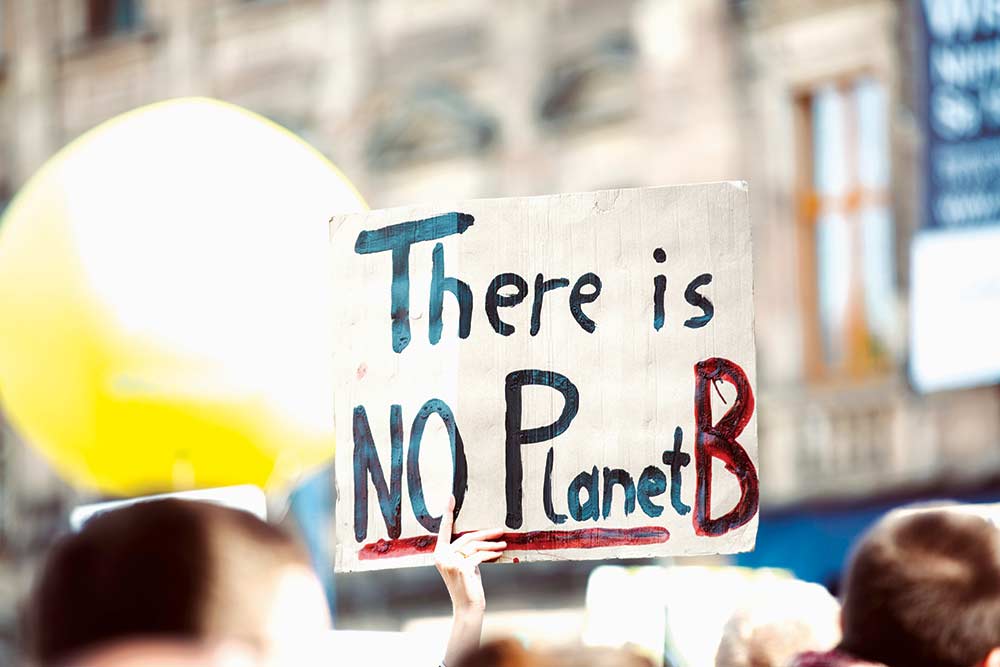With wildfires raging in Marin and surrounding counties, we can’t afford complacency about climate change, a major cause of the infernos we’ve endured for the last three years.
Though we’re struggling with the overwhelming consequences of the coronavirus pandemic right now, Marin hasn’t relegated climate change to the back seat. In fact, it has spent more than two years developing a strategic plan to identify local climate change issues. The County isn’t just talking about these problems; they’ve come up with local solutions, too.
Prior to implementing the plan, they want public input on their efforts. We have until the end of August to give our feedback, so let’s examine the Drawdown: Marin program and its strategic plan.
Drawdown: Marin is a community-driven campaign created to dramatically reduce greenhouse gas (GHG) emissions, sequester carbon and prepare for climate-change impacts. Backed by Marin’s heavy hitters, Drawdown: Marin was launched in October 2017 by the Marin County Board of Supervisors and coordinated by the County’s Sustainability Team. More than 150 volunteers, including technical experts, community members, County and city staff, academia, and financial specialists, were recruited to work with a large network of local towns, cities, community-based organizations and individuals.
The vision for Drawdown: Marin involves reversing the County’s impact on climate change “by implementing local solutions as we create a thriving, equitable and resilient future for all.” The ambitious goal is to substantially reduce GHG emissions: a 60 percent reduction below 2005 levels by 2030; and below zero by 2045.
To help achieve these objectives, Drawdown: Marin planners presented 29 climate-change solutions to the Executive Steering Committee. Seven were selected for immediate implementation and plan organizers would like your comments on those solutions:
1) Marin Carbon Farming Initiative
By expanding carbon-capture practices to 180 Marin farms and ranchers across 90,000 acres, the County could sequester 525,000 megatons of carbon dioxide equivalent by 2045.
2) Zero Emission Vehicles – Drive Clean Bay Area
With 52 percent of Marin’s total GHG emissions resulting from transportation, zero-emission vehicles are key to helping the County significantly reduce climate change. Drive Clean Bay Area, a new campaign, aims to accelerate widespread adoption of zero-emission vehicles by Marin residents and employees.
3) Agricultural Institute of Marin (AIM) – Center for Food & Agriculture
The Center for Food & Agriculture and Zero Waste Farmers Market intend to connect underserved communities needing healthy foods with farmers providing local, sustainably grown foods.
4) Microgrids – Fairfax Pavilion Pilot Project
Together with its partners, Fairfax proposes to build a Community Resilience Center at the Fairfax Pavilion. Clean energy such as solar power, batteries and a new inverter will supplement existing solar photovoltaic systems at the Pavilion and fire and police stations. The Pavilion will provide a community gathering space and a childcare center during public safety power shut-offs. It’s the ideal venue to showcase technology and inspire other municipalities to develop similar public spaces.
5) Community Resilience Hubs
Community Resilience Hubs built at the Albert J. Boro Community Center/Pickleweed Park in San Rafael and the County Health and Wellness Campus in the Canal District would be a boon to area residents. The hubs plan to feature community gardens, health clinics, a communications center, green power and recreational and education opportunities.
6) Biomass Study/Recovery Pathways
Marin would study biomass, which is simply plant material and animal waste. What are its existing sources and uses? Is there an impact on GHG emissions and wildfire protection? How much and what types of biomass are generated by the county? The study seeks to support the sustainability of existing biomass uses. For example, can we convert biomass to usable energy or reuse woody material for ground cover on ranches?
7) Resilient Neighborhoods – Climate Preparedness and Reduction (CPR) for the Planet
Resilient Neighborhoods is a proven program in reducing consumption-based GHG emissions and becoming resilient to climate related emergencies. Drawdown: Marin recommends adapting this model, which outlines specific objectives to reduce GHG emissions. Five pilot training programs would reach a variety of participants, including Spanish speakers, low-income residents, seniors, parents and folks with high carbon footprints. The desired outcome is to “engage everyone in achieving climate protection goals.”
Now that we have a basic understanding of Drawdown: Marin, visit www.drawdownmarin.org to learn more about the initiatives. Before you put it off to binge Netflix, take a deep breath of that wildfire smoke outside your front door and let it motivate you to provide feedback on the strategic plan.
After citizen input is received, a revised plan will be presented to the Board of Supervisors later this year for their approval. The deadline for comments is Aug. 31, 2020.
“Solving the climate crisis is within our grasp, but we need people like you to stand up and act,” said Al Gore, founder and chairman of the Climate Reality Project.
Amen to that.
email: ni***************@***oo.com









The 1970 DVD with the title who stole the electric car is a major if not complete answer to what is terrifying us so that we refuse to recognize we are in the midst of climate changes with established ocean level rising occurring in discrete parts of this planet especially the South Pacific Islands. This is not allowed to be published on America media or broadcast . Suppression of the Free Press is the initial stage of establishing a totalitarian government . The NorCal inventor of the all-electric car before 1970 was able to get more than three hours of driving at 70 miles per hour! That was half a century ago people! Obviously politics has gotten in the way and it’s still there. As Bob Dylan wrote in 1962 “it’s a political world where love has no place.” If you do not show this video to a large group then we are definitely doomed. Do not trust politicians. They sold us out.